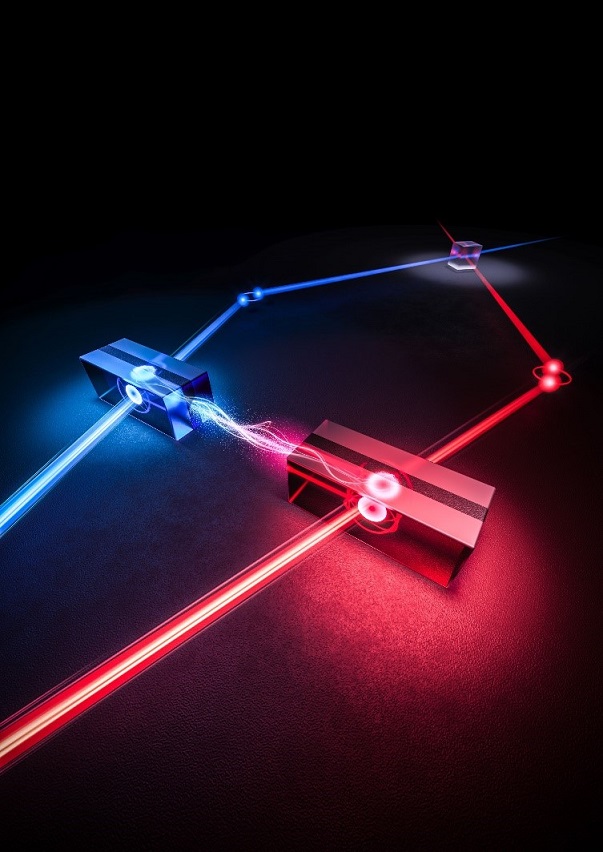
Previously, an elementary link of a quantum repeater has been realized in cold atomic ensembles and single quantum systems. These demonstrations are all based on emissive QMs, in which the entangled photons are emitted from QMs. Quantum repeaters constructed by emissive QMs have simple structures, but poor compatibilities. It is a big challenge to support deterministic entanglement sources and multiplexed operations simultaneously, which are two key technologies to enhance the entanglement distribution rate.
Quantum repeaters based on absorptive QMs can overcome such limitation because they separate the quantum memories and the entangled photon sources. The research team led by Prof. LI Chuanfeng and Prof. ZHOU Zongquan from University of Science and Technology of China (USTC) of the Chinese Academy of Sciences has focused on the research of absorptive QMs based on rare-earth-ion-doped crystals. For this kind of QMs, the entanglement source can be flexibly selected, including deterministic entanglement sources, while remaining the capability of multiplexed operations, and therefore should be more efficient for quantum repeater applications.
In this study, the researchers used external entangled photon-pair sources (EPPSs) based on spontaneous parametric down-conversion and achieved heralded entanglement distribution between two absorptive QMs for the first time.
They built an elementary link with an intermediate station and two nodes at the ends. Each node contains an absorptive QM with a bandwidth of 1GHz and a bandwidth-matched EPPS. In each node, one entangled photon of each photon pair was stored in the “Sandwich-like” QM while the other was transmitted to the middle station for joint Bell-state measurement (BSM). A successful entanglement swapping operation was heralded by the successful click of BSM.
The entanglement between two QMs 3.5 meters apart was established with a fidelity of approximately 80.4%, although there weren’t any direct interactions between two remote QMs. Four temporal modes were employed in this demonstration of an elementary link of a quantum repeater, accelerating the entanglement distribution rate by four times.
This study provides a feasible roadmap for the development of practical quantum repeaters and lays the foundation for the construction of high-speed quantum networks. "The use of absorptive quantum memory is expected to achieve high efficiency quantum repeater and quantum network in the future, and further promote the communication between 'Cowherd and Weaver Girl' in the quantum world," said Prof. ZHOU.
For future developments, the research team will continue to improve the performances of the absorptive QMs, and adopt deterministic entanglement sources. "We will use deterministic entanglement source to greatly improve the entanglement distribution rate, and to achieve practical quantum repeaters beyond direct transmission of optical fiber," said Prof. LI.

An elementary link of a quantum repeater based on two absorptive QMs with the Sandwich-like structure (Image by WANG Guoyan and MA Yanbing)

86-10-68597521 (day)
86-10-68597289 (night)

52 Sanlihe Rd., Xicheng District,
Beijing, China (100864)

